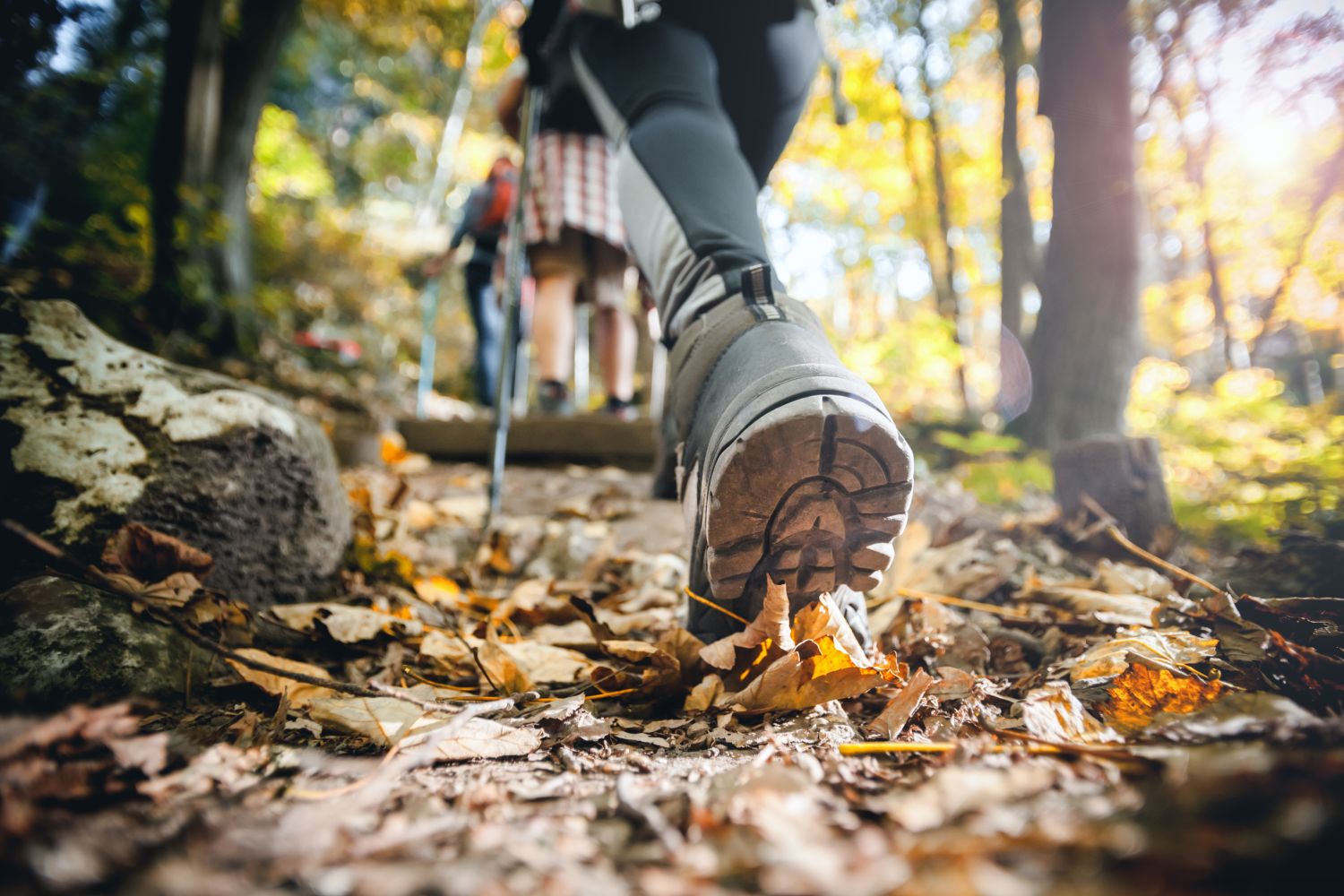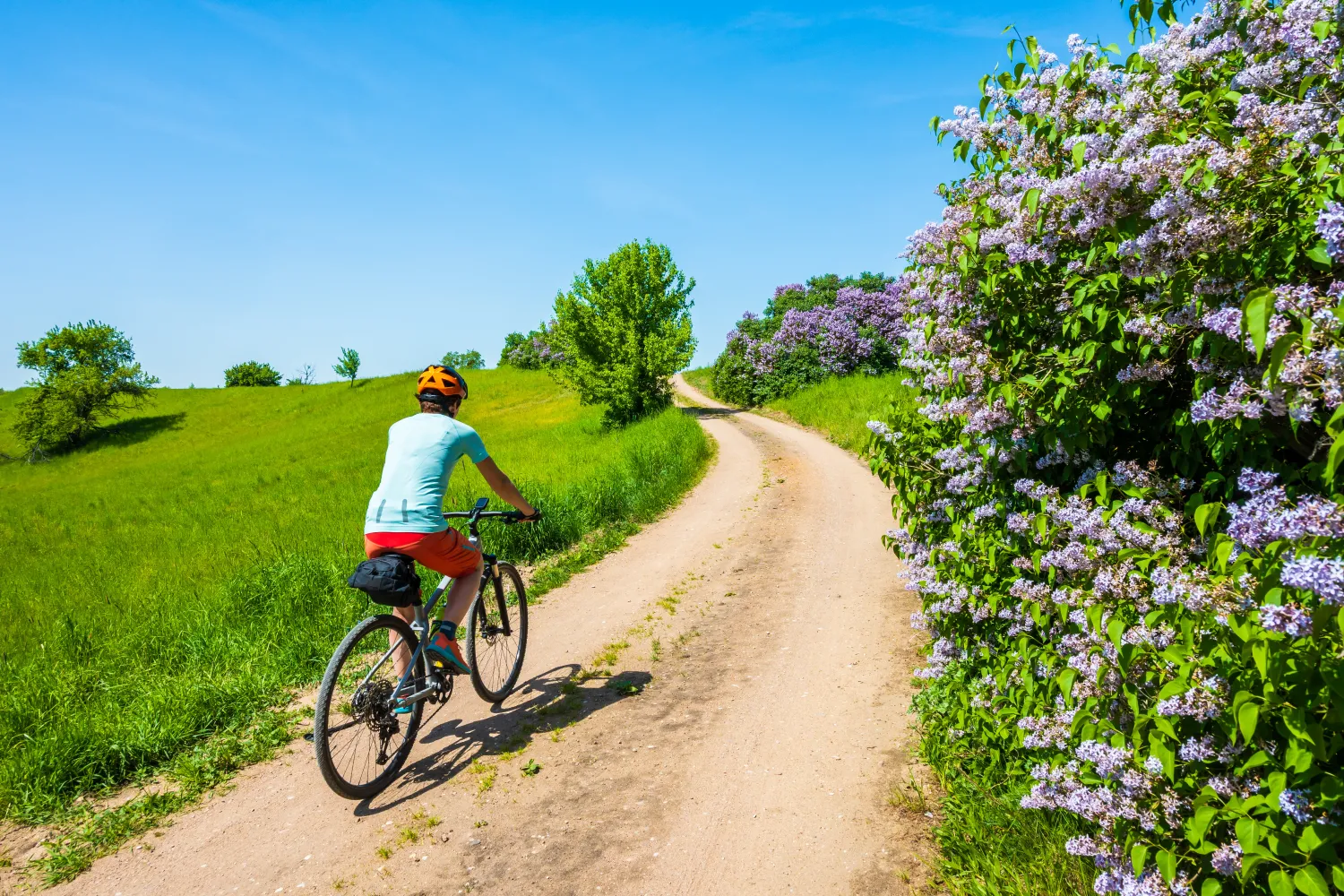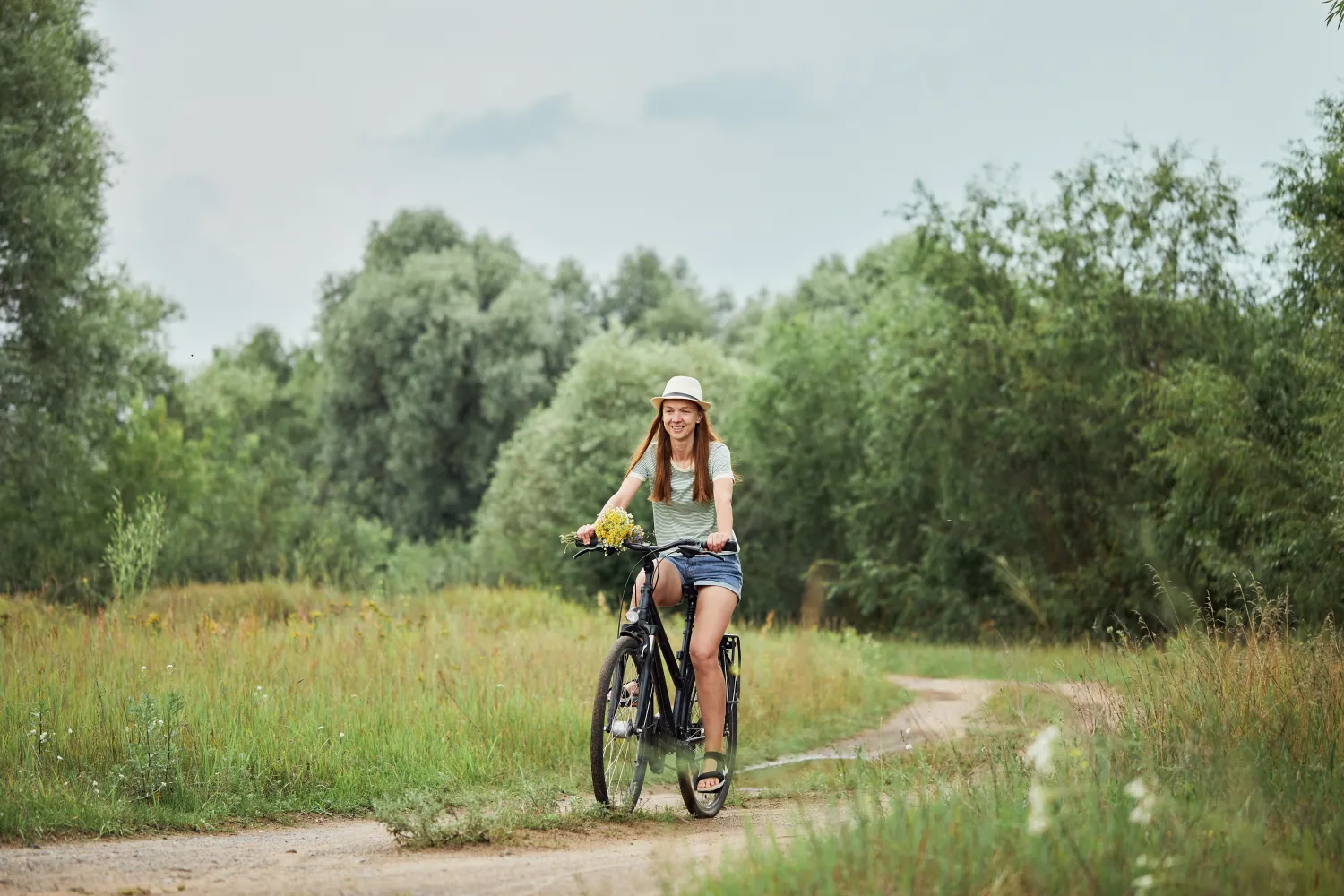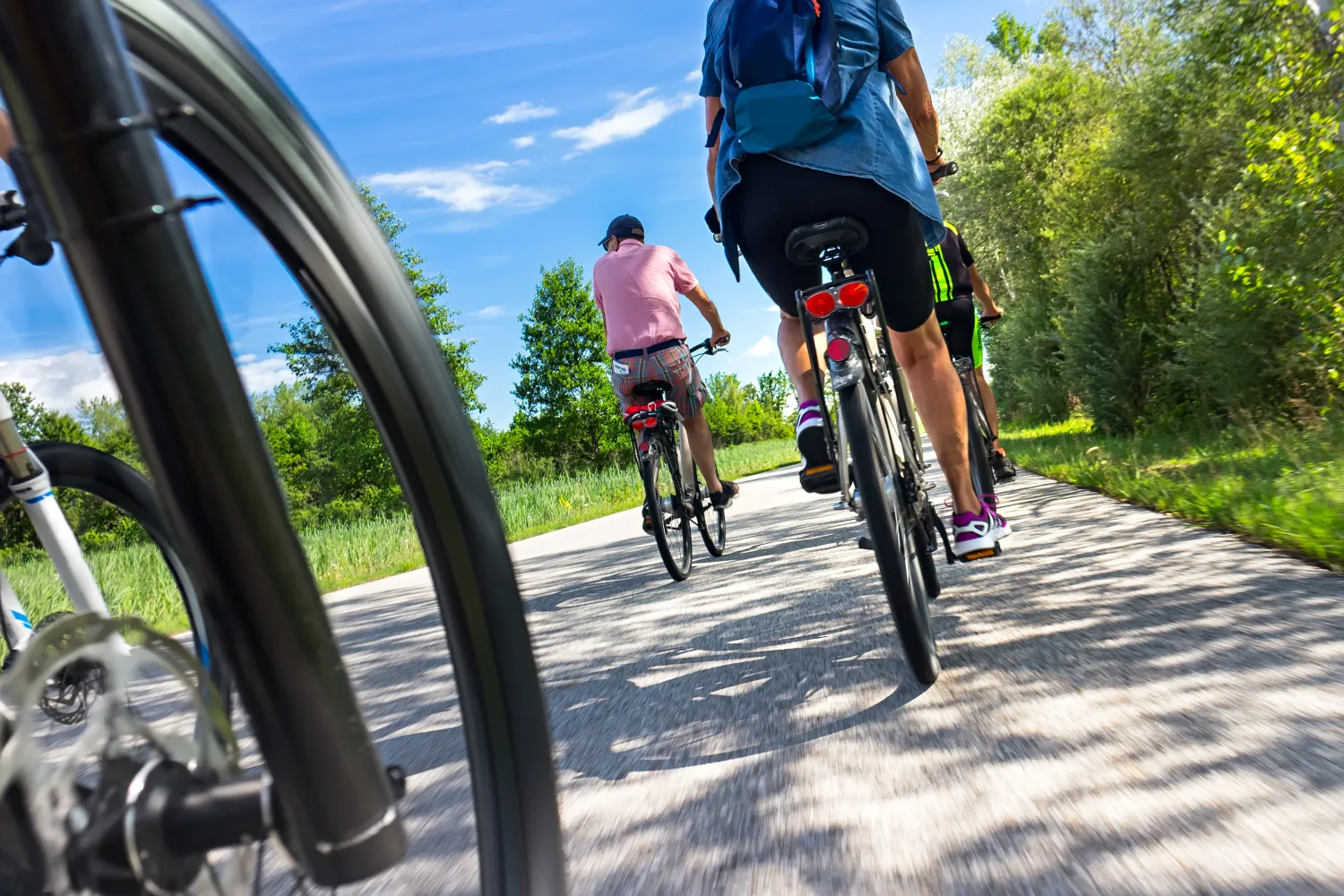In a world where over-consumption and over-equipment often seem de rigueur, the art of traveling light is emerging as a liberating philosophy, especially in the field of hiking and cycling tourism. Embracing simplicity on the trail or road isn’t just about comfort; it’s a path to a more authentic experience, a deeper connection with nature, and unparalleled freedom in our adventures. By lightening our load, we allow our spirit to soar and our body to move with ease, transforming each step or pedal stroke into a moment of pure joy.
This article aims to be your partner in this quest for minimalism. We’ll share practical tips and tried-and-tested tricks for packing efficiently, selecting the right gear and, ultimately, adopting a minimalist approach to your travels. Whether you’re a seasoned hiker looking to optimize your backpack or a cyclotourist eager to cover longer distances with less burden, the insights provided here are designed to enrich your next outdoor adventure. Get ready to rediscover the freedom of traveling light, where every item you pack is both essential and meaningful.
The minimalist travel philosophy
At the heart of the minimalist travel philosophy is a quest for authenticity, a desire to forge genuine bonds with the cultures, landscapes and people we meet along the way. This approach, centered on lightness and practicality, goes hand in hand with a heightened ecological awareness, where every choice of equipment or itinerary takes into account its impact on the environment.
Adopting a minimalist travel style aligns perfectly with the principles of slow tourism, an approach promoted by Evazio, who guides you towards “The shortest route to the authentic”.. By reducing our load, we give ourselves the space and time to savor every moment, to appreciate the details often missed in the rush. This approach encourages us to travel less, but better, prioritizing the quality of experiences over the quantity of kilometers traveled or sites checked off a list.
Lightness in travel encourages a deeper, more reflective immersion, allowing us to truly connect with the communities and environments we explore. In short, minimalist travel according to Evazio is not simply a method of reducing the weight of our backpacks; it’s an invitation to lighten our minds, awaken our consciousness and embrace the very essence of authenticity.
How to prepare your hiking equipment list?
Preparing your gear list is a crucial step in embracing the art of minimalist travel. This list should be thoughtful and intentional, focusing on absolute necessities and leaving out the superfluous. To begin, ask yourself, “What do I really need to live this adventure to the full?” This question will help you distinguish the essential from the dispensable.
The key lies in selecting versatile, multi-purpose items. Opt for clothing that can be layered to suit different climates, items that serve multiple functions (like a lightweight towel that can double as a blanket or sunshade), and compact but powerful tools (like a Swiss Army knife or a rechargeable headlamp). Also consider items that can be reused rather than thrown away, such as collapsible water bottles and compact kitchen utensils.
The importance of this approach is not only to minimize your load, but also to ensure that every item you pack contributes significantly to your comfort, safety and enjoyment throughout your trip. By adopting this approach, you maximize the efficiency of your equipment while preserving the lightness and flexibility essential to a successful adventure trip.
How to choose your equipment for a minimalist hike
When it comes to selecting your equipment for a minimalist tour or bike trip, the maxim “less is more” comes into its own. Investing in high-quality, durable, lightweight and compact equipment is essential. Well-designed items may have a higher initial cost, but their durability and long-term effectiveness represent real savings, not to mention a significant improvement in your travel experience.
For your backpack, choose one that’s ergonomic and durable, but light enough not to add unnecessary weight. It should have adjustable straps and practical compartments for optimal organization. As for footwear, it should be adapted to the terrain: waterproof for wet trails, breathable for hot climates, with good grip and foot support to avoid injury.
Technical clothing is also a wise choice. Choose breathable fabrics that dry quickly and provide good insulation. Choose clothing that can be worn in layers to adapt easily to temperature changes. Finally, don’t forget essential accessories such as hats, sunglasses, sunscreen and headlamps, which should be both functional and lightweight.
By carefully selecting each piece of your equipment with a critical eye on quality rather than quantity, you not only ensure a more enjoyable and less cluttered adventure, but also a more environmentally friendly approach thanks to reduced waste and extended use of each item.
Secret tips and techniques for packing your hiking gear and belongings
Packing your gear and belongings for a minimalist hike is an art that cleverly combines organization and efficiency. By adopting tried-and-tested packing techniques, you’ll optimize space while ensuring easy access to your necessities. Here are a few methods and tips to guide you.
First, roll your garments rather than fold them. This simple technique not only reduces the amount of space taken up, but also minimizes wrinkles. Rolled garments can be stored more flexibly, filling the small gaps between larger items.
Compression bags are your allies in minimizing the volume of bulkier items such as sleeping bags or insulating clothing. By evacuating air, these bags considerably reduce the space required for these essentials.
When distributing the weight in your backpack or bike panniers, make sure to place heavy objects as close to your back and in the center of your bag. This arrangement promotes better weight distribution, making carrying easier and reducing the risk of imbalance. Less heavy and bulky items can be placed around and on top, while day-to-day necessities and frequently used items should remain accessible, in the outer pockets or top of the bag.
Evazio lists some of the most surprising techniques for managing your packages:
- Technique N°1 – Packing cubes: Organize your belongings by category (clothes, accessories, gadgets) with packing cubes. This simplifies unpacking, so you don’t have to turn over everything to find what you need.
- Technique #2 – Cross-layer packing: For a uniformly flat, optimized bag, layer your clothes by alternating the ends. This method maximizes space while keeping your belongings neat and tidy.
- Technique N°3 – Ziplock bags: Protect and organize your small items and electronic devices in ziplock bags. It’s also a great way to keep them dry.
- Technique N°4 – Belts in shirt collars: Wrap your belts inside collars to maintain their shape and optimize space in your bag.
- Technique N°5 – Carry bulky items: Put on your sturdiest hiking boots and your thickest jacket to save space in your bag.
- Technique N°6 – All-in-one toiletry bag: Opt for multi-purpose products and travel containers to minimize the space needed for your toiletries.
- Technique #7 – Socks in shoes: Not only does this save space, it also helps keep your shoes in shape.
- Technique N°8 – Portable elastic clothesline: Perfect for drying clothes on the move, it can be attached to your bag to air wet clothes while you continue your walk or drive.
- Technique N°9 – Water bottle with integrated filter: This saves you carrying extra water, while ensuring constant access to drinking water, thus reducing the weight of your pack.
- Technique N°10 – Strategic distribution in bike panniers: To maintain good bike handling, distribute weight evenly and place heavy objects at the bottom to lower the center of gravity.
By applying these packing techniques, you’ll maximize the space available while ensuring a more comfortable and organized touring experience.
Light but satisfied: control your water and food requirements
Travelling light doesn’t mean compromising your hydration and nutrition. The key is to plan carefully. Opt for dehydrated or freeze-dried foods which, when reconstituted with water, provide a nourishing meal without the extra weight. Energy bars, dried fruit and nuts are also dense and convenient calorie options. For hydration, consider a reusable water bottle with built-in filter, allowing you to refill at any source of drinking water you encounter. This way, you stay light while meeting your essential needs.
Pitfalls to avoid: the art of traveling light
One of the most common pitfalls is over-packaging. Remember: every gram counts. Pack only the essentials and resist the urge to “just in case”. Before you leave, do a trial run of your equipment. This repetition often reveals duplicates or useless items. It also ensures that every item works properly, saving you from unpleasant surprises in the wild.
Lightness is the key to a memorable ride
By adopting the minimalist travel practices mentioned, you set yourself up for more enjoyable and meaningful expeditions. Traveling light is not a constraint but a liberation, allowing you to focus on the essence of the adventure rather than on managing your belongings. Remember: every choice of equipment and preparation is an opportunity to strengthen your connection with the environment, fully embrace every experience and discover the pure joy of exploration. The world is waiting for you; pack less, discover more.
Discover our most adventurous hikes off the beaten track:
Cycling off the beaten track: https://voyageavelo.net/sejours-voyages/voyage-velo/?_theme=hors-des-sentiers-battus




